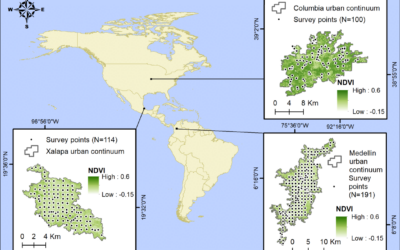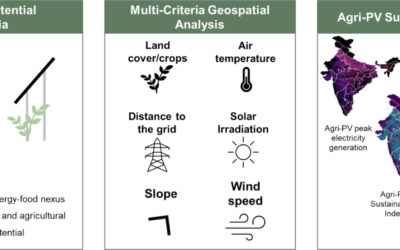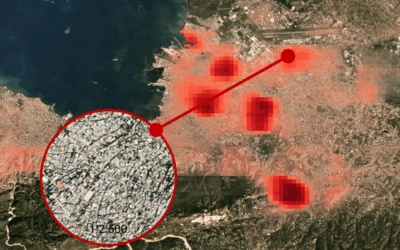New publication on the impact of urban configuration types on urban heat islands, air pollution, CO2 emissions, and mortality
An international team of researchers from the Institute for Global Health in Barcelona in Spain, the Department of Experimental and Health Sciences of the Universitat Pompeu Fabra in Barcelona in Spain, the CIBER Epidemiología y Salud Pública in Madrid in Spain, the Atmospheric, Climate, and Earth Sciences Division of the Pacific Northwest National Laboratory in Richland, WA, in the USA, the Earth Observation Center (EOC) of the German Aerospace Center (DLR) in Oberpfaffenhofen in Germany and our EORC of the University in Würzburg published the paper titled “The impact of urban configuration types on urban heat islands, air pollution, CO2 emissions, and mortality in Europe: a data science approach” in The LANCET Planetary Health Journal. The paper was authored by Tamara Iungman, Sasha Khomenko, Evelise Pereira Barboza, Marta Cirach, Karen Gonçalves, Paula Petrone, Thilo Erbertseder, Hannes Taubenböck, Tirthankar Chakraborty and Mark Nieuwenhuijsen.
Here is the link to the open access publication: https://www.thelancet.com/journals/lanplh/article/PIIS2542-5196(24)00120-7/fulltext
Here is the summary of the study:
Background: The world is becoming increasingly urbanised. As cities around the world continue to grow, it is important for urban planners and policy makers to understand how different urban configuration patterns affect the environment and human health. However, previous studies have provided mixed findings. We aimed to identify European urban configuration types, on the basis of the local climate zones categories and street design variables from Open Street Map, and evaluate their association with motorised traffic flows, surface urban heat island (SUHI) intensities, tropospheric NO2, CO2 per person emissions, and age-standardised mortality.
Methods: We considered 946 European cities from 31 countries for the analysis defined in the 2018 Urban Audit database, of which 919 European cities were analysed. Data were collected at a 250 m × 250 m grid cell resolution. We divided all cities into five concentric rings based on the Burgess concentric urban planning model and calculated the mean values of all variables for each ring. First, to identify distinct urban configuration types, we applied the Uniform Manifold Approximation and Projection for Dimension Reduction method, followed by the k-means clustering algorithm. Next, statistical differences in exposures (including SUHI) and mortality between the resulting urban configuration types were evaluated using a Kruskal–Wallis test followed by a post-hoc Dunn’s test.
Findings: We identified four distinct urban configuration types characterising European cities: compact high density (n=246), open low-rise medium density (n=245), open low-rise low density (n=261), and green low density (n=167). Compact high density cities were a small size, had high population densities, and a low availability of natural areas. In contrast, green low density cities were a large size, had low population densities, and a high availability of natural areas and cycleways. The open low-rise medium and low density cities were a small to medium size with medium to low population densities and low to moderate availability of green areas. Motorised traffic flows and NO2 exposure were significantly higher in compact high density and open low-rise medium density cities when compared with green low density and open low-rise low density cities. Additionally, green low density cities had a significantly lower SUHI effect compared with all other urban configuration types. Per person CO2 emissions were significantly lower in compact high density cities compared with green low density cities. Lastly, green low density cities had significantly lower mortality rates when compared with all other urban configuration types.
Interpretation: Our findings indicate that, although the compact city model is more sustainable, European compact cities still face challenges related to poor environmental quality and health. Our results have notable implications for urban and transport planning policies in Europe and contribute to the ongoing discussion on which city models can bring the greatest benefits for the environment, climate, and health.









